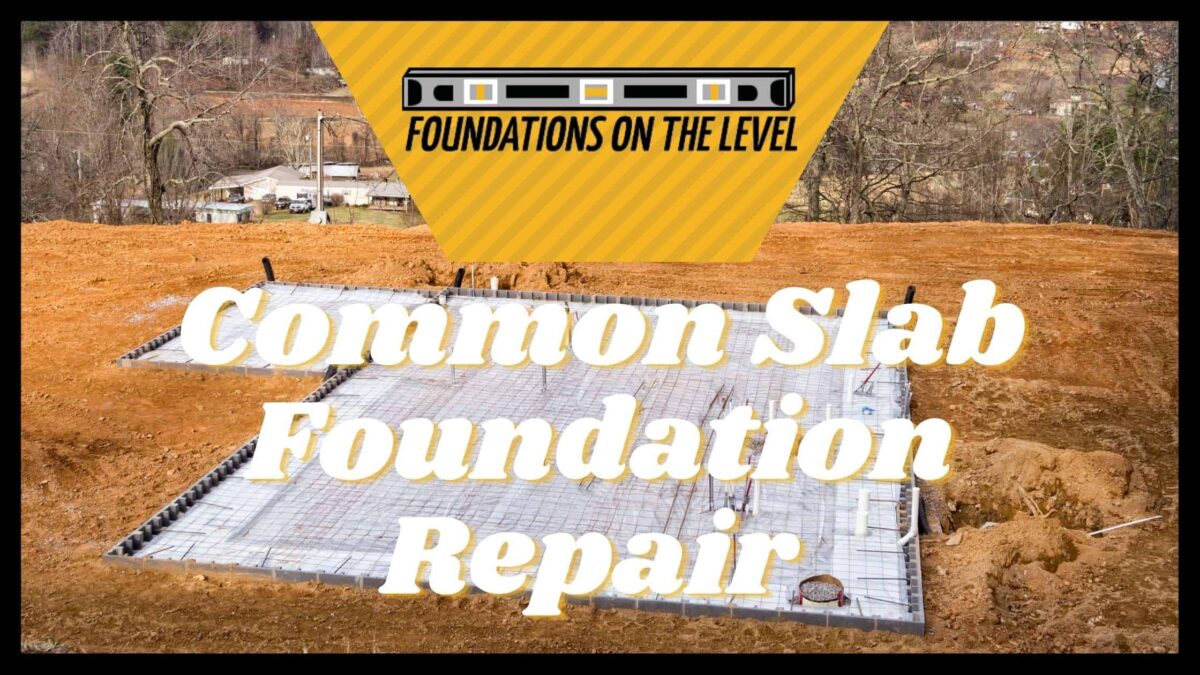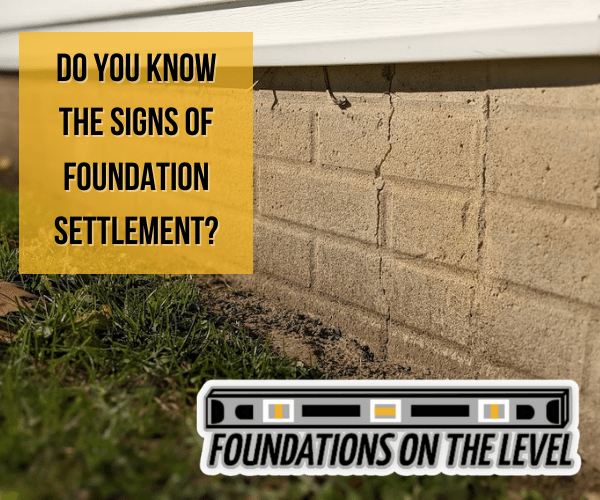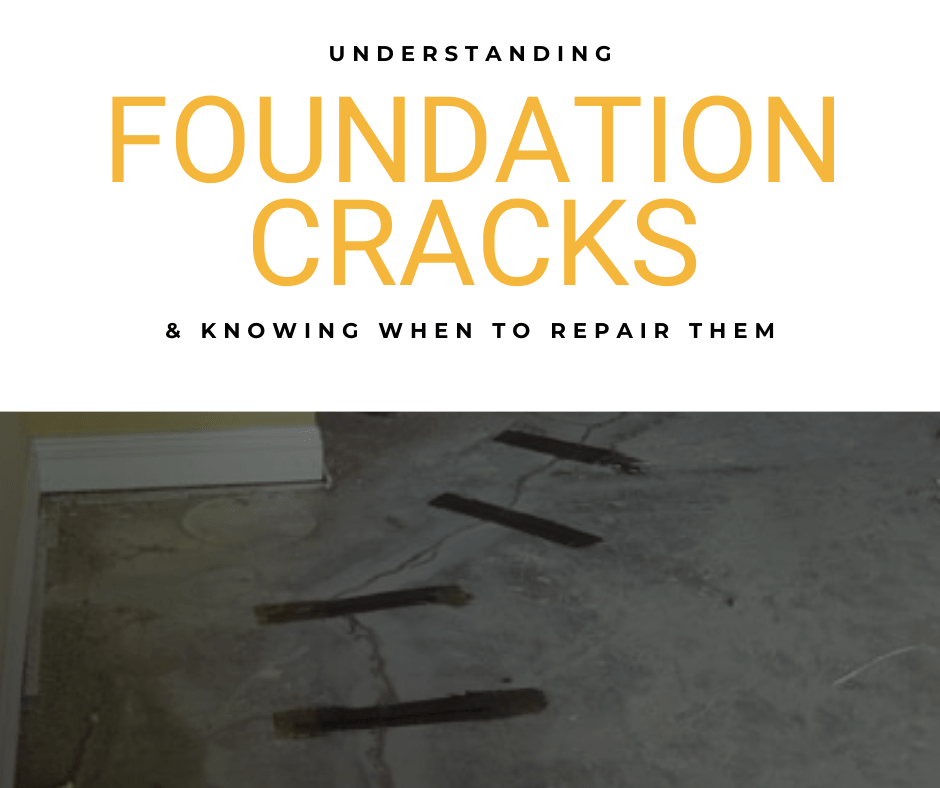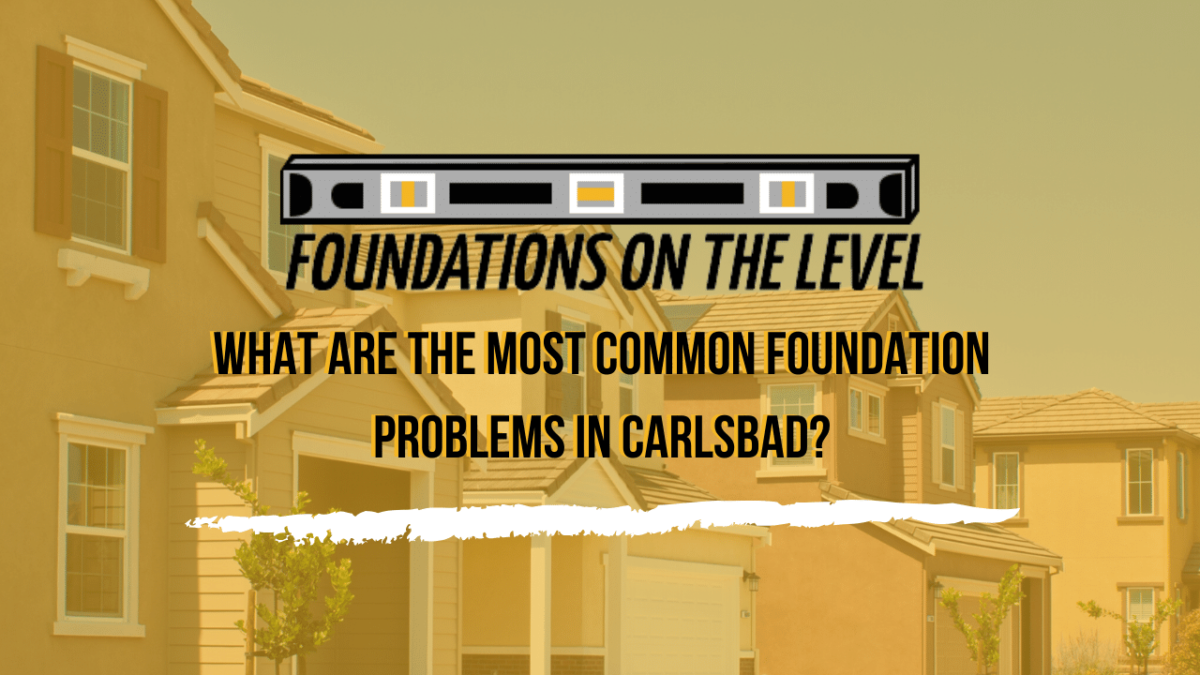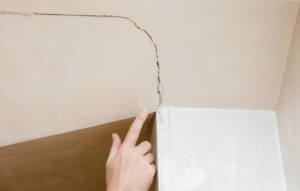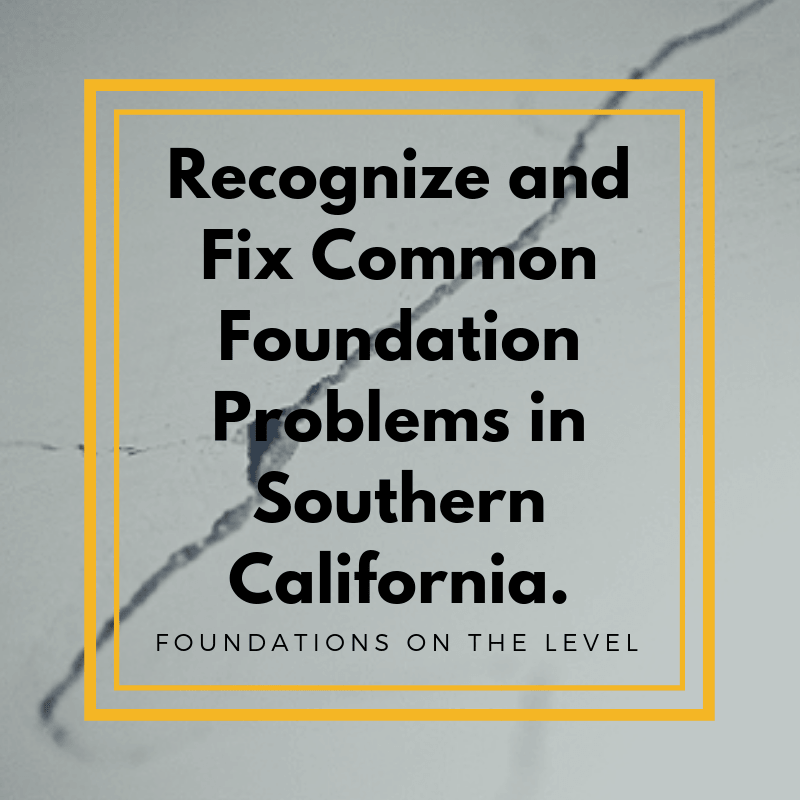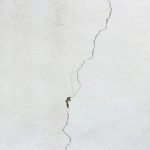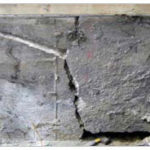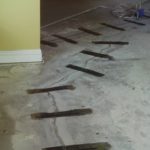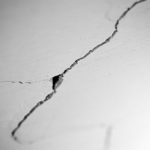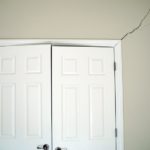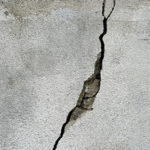There are so many reasons why your slab foundation might need repairs. In this article, we’ll talk about common slab foundation problems homeowners have and some foundation repair solutions for these problems.
Problem No. 1: Slab Foundation Settlement
Foundation Settlement is another way to say that the foundation, or parts of it, is slowly sinking into the ground. Settlement can be divided into two main categories.
- Uniform settlement
- Differential settlement
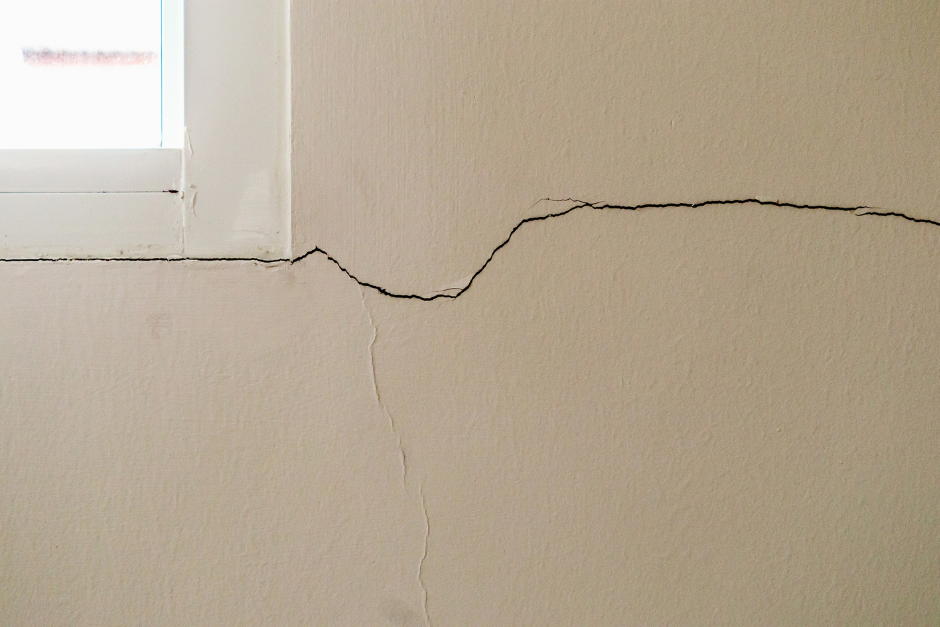
Uniform settlement is by far the less harmful. This is when the entire foundation settles roughly the same amount. Small amounts of uniform, or roughly uniform, settlement generally isn’t a significant issue. It might cause some minor hairline cracking that might need to be repaired if it leads to water intrusion. Generally, however, it does not cause structural issues.
Differential settlement, however, occurs when a portion of the slab settles more than the rest. As you might expect, this can cause a host of problems.
Issues Caused By Differential Settlement
- Wall Cracks: If a portion of the foundation isn’t being properly supported by the soil below, it places some of the walls under a level of tensile or compressive force that is sometimes more than the wall can withstand, leading to cracking. This can affect both interior and exterior walls, with stair-step cracks common in exterior masonry walls. Some vertical cracks wider than a hairline can also appear. Often they are wider on one end than the other depending on which section of the house is settling.
- Slab Cracks: The same forces being applied to the walls are also being applied to the slab floor. This can cause cracking, sometimes including an elevation change on either side of the crack. This of course can lead to another problem.
- Water Intrusion: Slab cracks offer an avenue for water to make its way into your home, particularly if you have poor drainage around your foundation.
- Sticking Doors and Windows: Differential settlement can shift the whole home out of alignment. Outside of leading to cracks, this also causes problems for doors and windows. The door or window likely will no longer fit the opening correctly. Some places might stick while others have gaps.
- Tilting Chimneys: If your chimney is on the outside wall of the house, the settlement could cause it to start tilting and pulling away from the house.
- Slanting Floors: If your floors suddenly start tilting in one direction, differential settlement might be to blame.
Problem No. 2: Foundation Heaving
While heaving is technically the opposite of settlement, it can cause many of the same problems. This is because it has the same result, the building’s foundation being thrown out of alignment.
Generally heaving is related to “active” clay soils. These soils have extreme shrink-swell cycles. If the clay soil wasn’t properly accounted for during the building process, you could have a cycle of heaving and settlement depending upon the weather and soil conditions.
Frost heaving can also produce similar results.
Problem No. 3: Slab Foundation Construction Defects
If the building’s foundation slab was improperly poured or inadequately supported, it will lead to problems.
This is the only real man-made problem on the list. If the slab isn’t able to support the weight of the home, there are inevitably going to be issues.
Solutions for Slab Foundation Problems
Generally the most common cause of slab foundation problems is settlement. To solve settlement-related issues, you need to accomplish two things:
- Lift the foundation back to level
- Prevent additional settlement

To accomplish this, in most cases we use a foundation underpinning system. Underpinning involves sinking piers into the soil before hydraulically lifting the house back to level and transferring the load to them.
We use steel helical piers and push piers in our underpinning projects. Steel provides the strength needed to support the weight of the house while being able to be sunk deep enough to reach a layer of soil or bedrock strong enough to support the house. Many of the foundation repair methods using concrete can’t say the same thing.
Helical piers are steel bars with helical plates attached to give it the look of a giant screw. Push piers are an end-bearing pier without the helical plates which is sunk into the soil rather than screwed.
We can also repair any cracks that have been caused by the foundation problems.
Need to Repair a Slab Foundation in Southern California? Call us Today.
If you are looking for a professional foundation repair company don’t look any further! Here at Foundations on the Level, we strongly believe in quality customer service and treat every home as if it was our own. Our specialists will work directly with you to analyze the unique problems that your home is facing and come up with the best solution for your needs and budget. We have established a fantastic reputation within Orange County & San Diego County for foundation repair, slab releveling, retaining walls, and more. Contact us for a free estimate!
